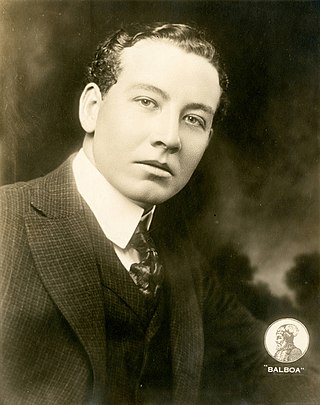Related Research Articles

Frederick Schiller Faust was an American writer known primarily for his Western stories using the pseudonym Max Brand. As Max Brand, he also created the popular fictional character of young medical intern Dr. James Kildare for a series of pulp fiction stories. His Kildare character was subsequently featured over several decades in other media, including a series of American theatrical movies by Paramount Pictures and Metro-Goldwyn-Mayer (MGM), a radio series, two television series, and comics. Faust's other pseudonyms include George Owen Baxter, Evan Evans, Peter Dawson, David Manning, John Frederick, Peter Henry Morland, George Challis, and Frederick Frost. He also wrote under his real name. As George Challis, Faust wrote the "Tizzo the Firebrand" series for Argosy magazine. The Tizzo saga was a series of historical swashbuckler stories, featuring the titular warrior, set in Renaissance Italy.

William Lawrence Boyd was an American film actor who is known for portraying the cowboy hero Hopalong Cassidy.

David Butler was an American actor, film director, film producer, screenwriter, and television director.

Irving Cummings was an American movie actor and director.

Lionel Belmore was an English character actor and director on stage for more than a quarter of a century.

Carl Stockdale also known as Carlton Stockdale was one of the longest-working Hollywood veteran actors, with a career dating from the early 1910s. He also made the difficult transition from silent films to talkies.

Lloyd Hughes was an American actor of both the silent and sound film eras.

Albert S. Rogell was an American film director. Rogell directed more than a hundred movies between 1921 and 1958. He was known for an aggressive directing style, shouting at his actors and crew.

Hunt Stromberg was a film producer during Hollywood's Golden Age. In a prolific 30-year career beginning in 1921, Stromberg produced, wrote, and directed some of Hollywood's most profitable and enduring films, including The Thin Man series, the Nelson Eddy/Jeanette MacDonald operettas, The Women, and The Great Ziegfeld, which won the Academy Award for Best Picture of 1936.

Géza von Bolváry was a Hungarian actor, screenwriter, and film director, who worked principally in Germany and Austria.
Noel Mason Smith was an American film director and writer. He directed more than 120 films between 1917 and 1952. He was born in Rockland, California, and died in Los Angeles, California.

Lee Shumway, born Leonard Charles Shumway, was an American actor. He appeared in more than 400 films between 1909 and 1953. He was born in Salt Lake City, Utah, and died in Los Angeles, California.

Philo McCullough was an American actor. He appeared in more than 250 films between 1914 and 1969. He was born in San Bernardino, California, and died in Burbank, California.

Winter Amos Hall was a New Zealand actor of the silent era who later appeared in sound films. He performed in more than 120 films between 1916 and 1938. Prior to that, he had a career as a stage actor in Australia and the United States. In sound films, he was frequently typecast as a clergyman.

Arthur L. Todd was an American cinematographer whose work included Hot Saturday (1932), I've Got Your Number (1934) and You're in the Army Now (1941).

James Crawford Van Trees was an American cinematographer in Hollywood whose career spanned the silent and sound eras.

Stars on Parade is a 1936 British musical film directed by Oswald Mitchell and Challis Sanderson and starring Robb Wilton, Arthur Lucan and Kitty McShane. It takes the form of a variety show featuring a number of music hall acts. It was made at Cricklewood Studios in North London. It was a released as a first feature on a Double Bill with the supporting feature What the Puppy Said.
F.W. Schröder-Schrom was a German actor who appeared in more than a hundred films between 1920 and 1955 including the military comedy-drama Shoulder Arms (1939).
Frank B. Good (1884–1939) was an American cinematographer who lensed more than 100 films between 1916 and 1937. He was known for working on Jackie Coogan productions and was an early member of the American Society of Cinematographers.
Harry L. Decker (1887–1959) was an American film producer associated with Columbia Pictures where he mainly oversaw production on western films. As an editor he was active in Hollywood from the 1910s through the 1930s. As a producer, he primarily worked on B-movie Westerns.